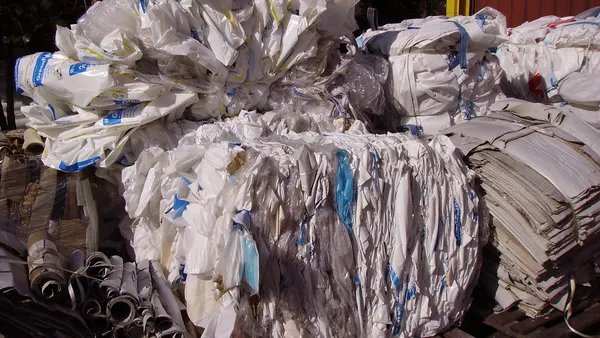Dive Brief:
- Goodwill Industries operates more than 3,200 stores where used clothing can be donated. Such donations are the first part of a multi-step process aimed at finding ways to keep textiles out of landfills, as reported by the Huffington Post.
- Any items that are clean enough to sell and don't move within about four weeks will end up at a "Buy the Pound" warehouse or 99-cent outlet store for even lower prices. After that, the items will be sold in mystery bins at live auctions where one bin could go for $35 or more.
- From there, Goodwill will send the material to textile recyclers. According to the Secondary Materials and Recycled Textiles Association, its members re-sell about 45% of this clothing within the U.S. or overseas. An additional 30% is turned into industrial rags and 20% is turned into fiber filling for a variety of uses.
Dive Insight:
Curbing the estimated 15 million tons of annual textile waste — of which about 15% is recycled — is an ongoing issue with no easy solution. Changing consumer habits and consumption is often seen as the first step, along with raising awareness about why putting textiles in the trash is far from ideal. Collection is challenging because even in densely populated areas the material usually isn't generated on a regular schedule or in sufficient quantities.
Goodwill San Francisco has teamed up with Ray Products Inc. for more modern collection bins to be used in multi-unit or commercial buildings that seem promising. Cities such as New York also offer collection bins for large buildings and run community drop-off programs. The city even held a fashion show with re-purposed sanitation worker uniforms to raise awareness.
Even if more material has the potential to be collected, processing options for it haven't fully evolved. Companies such as H&M — which offers free textile recycling in stores — are still working to use more recycled content in their products. Levi Strauss & Co. has debuted jeans which it says are the first made from post-consumer waste and aims to have a closed loop manufacturing system by 2020.










